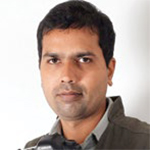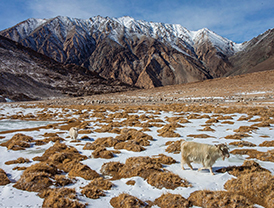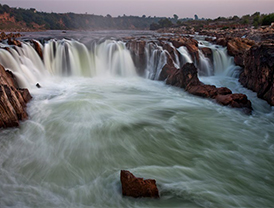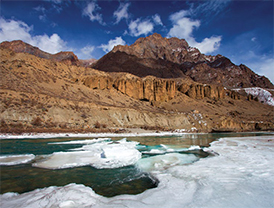 Arun Bhat is a photographer with over a decade of experience in vividly capturing subjects in multiple genres that includes travel, landscapes, studio work, real-estate, and much more. He is however more known for his prowess in travel and outdoor photography, an area in which he spends most of his time. Arun started his journey
Arun Bhat is a photographer with over a decade of experience in vividly capturing subjects in multiple genres that includes travel, landscapes, studio work, real-estate, and much more. He is however more known for his prowess in travel and outdoor photography, an area in which he spends most of his time. Arun started his journey
as a photographer with a film SLR camera, primarily focussing on landscapes, but quickly diversified to other areas of photography that interested him. He spent several years travelling across India with his camera, documenting the culture, heritage and landscapes of the country with his camera and building a large library of colourful travel imagery in the process. He is a winner of Tamron India Challenge and recipient of the prestigious HIPA awards, Dubai. Arun has been mentoring photography enthusiasts for more than five years now, designing and conducting a variety of photography workshops and tours that help people elevate their photography beyond conventionally recognized ideas. He is a co-founder at Darter Photography, an organization that conducts photography tours across India and South-East Asia. More of his works can be found on his website:www.paintedstork.com


How and when did you decide to take up photography as your profession?
I started photography with my first camera – a film SLR in 2002. I experimented with a variety of genres of photography using different types of films until I moved to digital in 2005. Two years later, I decided to go professional with photography. So I quit the work that I was doing until then and took up photography full time. For the next few years I travelled extensively across India, photographing the country’s landscapes and cultures, and created a large library of travel images. During this time, I started contributing my work to several newspapers, magazines and travel publications. Along the way, I was also mentored by a professiona l photographer, and at this time I learnt commercial and studio photography as well. The primary area that I worked on was real-estate and hospitality, photographing for many high-end hotels, resorts and construction companies. The first seeds of becoming a professional photographer was sown with my very first camera. It was a gradual transition into a full-time professional photographer around the year 2007-09.
According to you, which is the most challenging aspect of outdoor photography?
I believe that every form of photography has its challenges when you start pushing your limits and attempt to create unique and interesting work. The biggest limitation in outdoor, travel and landscape photography is that you have little control over situations and light. This gets compounded by the fact that you have access to limited equipment, unlike in a studio environment. Often when an interesting activity or action is unfolding in front of you, you can’t pause the action or expect it to happen in a well-lit situation. To give you an example, I have spent several mornings at a 10,000 feet high pass in Bhutan, trying to photograph the magnificent views of the mountains that the place offers. But half the time, I was surrounded by fog during sunrise and neither the mountains nor the sun were visible. Sometimes, it’s possible to make the best of the situation by creating unique compositions that may or may not tally with the initial plans you arrived with. But as an outdoor photographer, I have realized that it’s prudent to arrive at a location with plenty of time in hand, so that you can account for those rainy days and still accomplish what you were hoping for. Over the years, I have also developed plenty of patience to wait for the right moment and enjoy the waiting game. Even when I am photographing on the streets, I may often miss a perfect moment either because it was unfolding in poor light, or the situation just did not permit me to be at the right position. But lurking around longer, being there until the desired results are achieved, has often helped me return with images that I was hoping to make.


Being a photography mentor, what are the newest photography trends that you personally admire?
The sweetest thing about today’s photography is how technology is evolving and how photographers are quickly adopting them. Work that would require complicated equipment and highly skilled image-making is now achieved with little effort even with cell-phone cameras. Even with professional equipment, the imagequality has gone leaps and bounds. Cameras are so good today that you often don’t have to struggle maniacally with low-light situations or highcontrast scenes like you would only a few years ago. In terms of the way images are made, photography in recent years is becoming increasingly about storytelling than just capturing something beautiful. Storytelling was mostly a photojournalists’ domain in the past, but is now becoming mainstream. A trend that is definitely positive.

